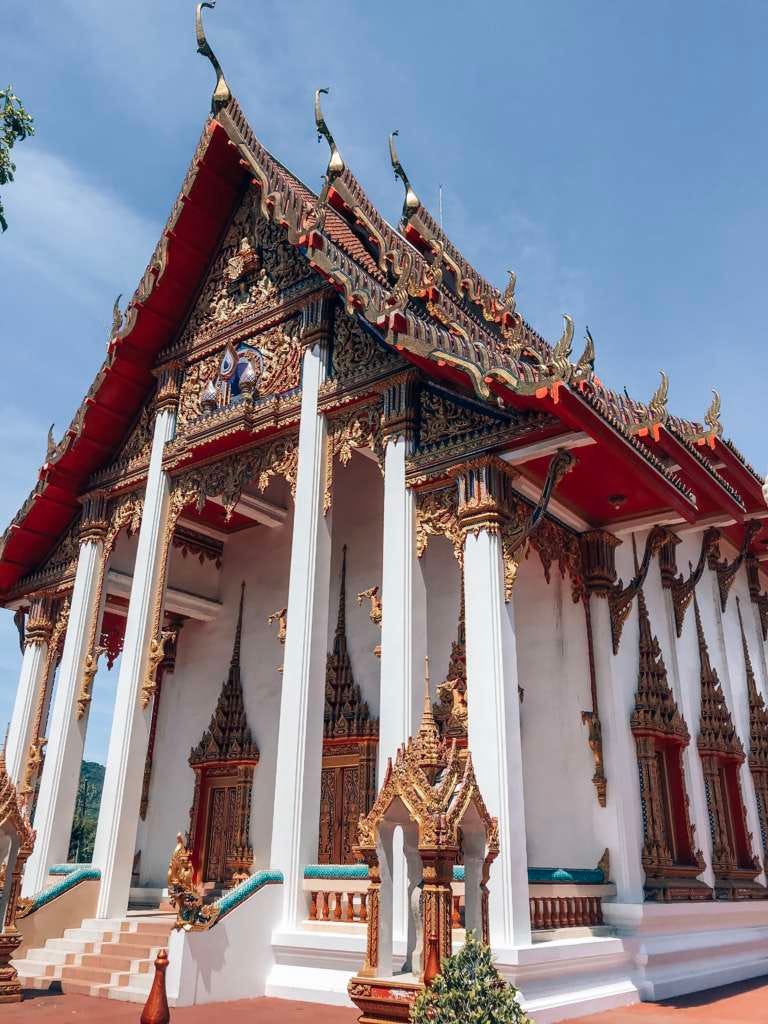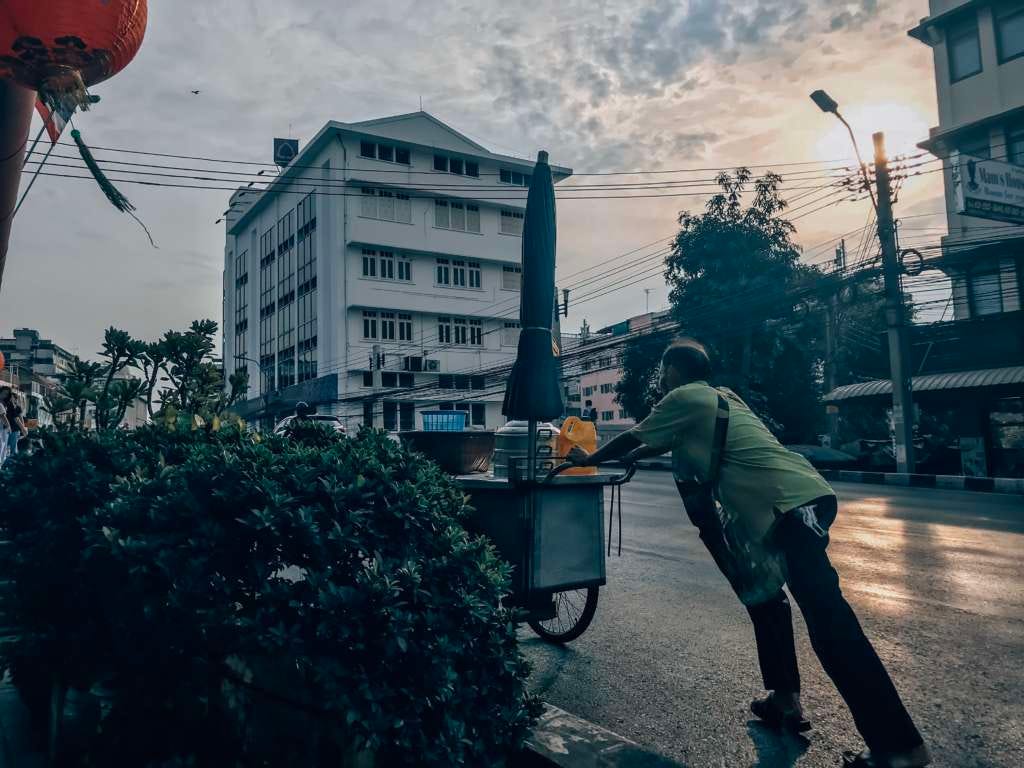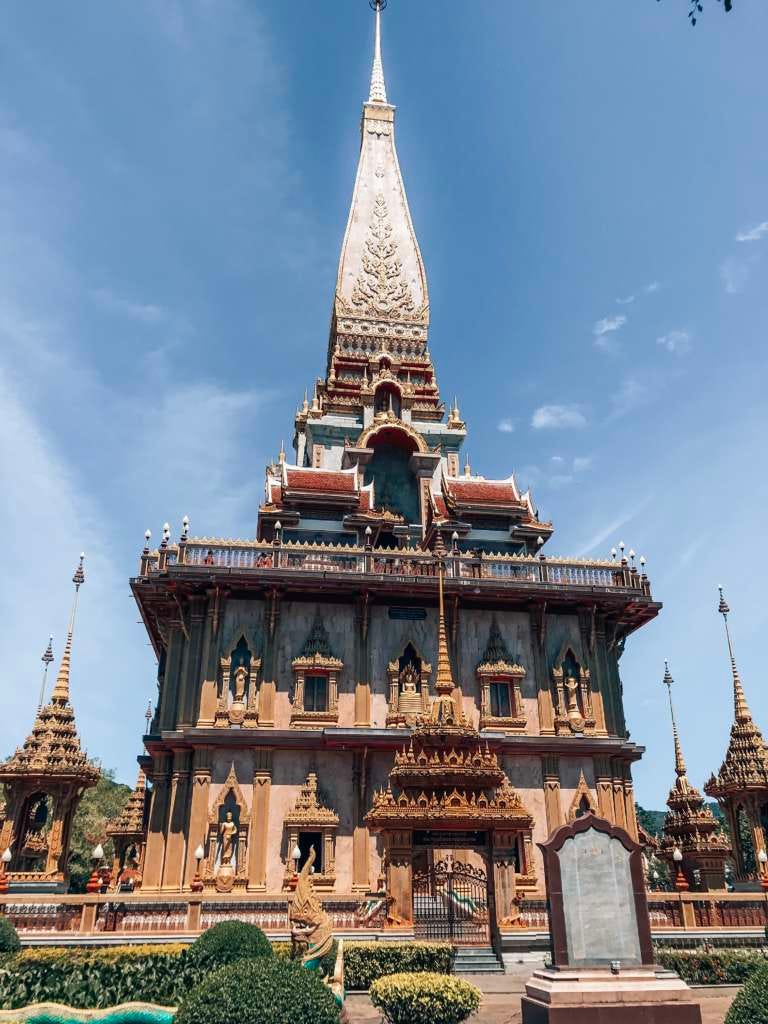
My Time in Bangkok
When I lived in California, I had considered local drivers to be inconsiderate and a bit haphazard. These traits exacerbated the frustration within infamous LA traffic. People—including myself it seems—always think the problem lies with other drivers. This or that person’s driving too slow, too fast, too close to my bumper, doesn’t know how to use their turn signal…the list goes on.
American roads are ensconced by a reasonable set of traffic laws dictating our speed limit, lane-changes, seat belt usage, and so on. There’s even safety regulations that prevent us from driving unsafe vehicles. We drive amidst a cocoon of first-world preventative measures.
The streets of Bangkok are a bit different.
In Bangkok, drivers seem to commute as if in search of a fender-bender. There is no adherence to lanes or speed limits. Cars, trucks, motorcycles and tuk tuks—three-wheeled, open-air vehicles—share the road and, despite the standstill speed of the traffic, form a fluid landscape. Traffic remains dense late into the night. Road conditions are precarious and other drivers seem—at least to my untrained, foreign eye—unpredictable and daring.
Drivers appear nonchalant while maneuvering dense, lawless traffic that would startle most Americans. Buses and cars move in unison. Motorcycles flow freely in between like swimming fish. They dodge each other and push the pace. Like agile, nimble-footed dancers, the bikes zig and zag to overtake their clumsier, three- and four-wheel counterparts. Tuk tuks provide character to the commotion with aggressive, outdated engine sounds.
Patterns of motion appeared to coexist like oil and water, pushing and pulling like restless race horses. Chaos surrounds each of the autonomous vehicles. Speed limits and driving lanes are dismissed. Transportation is an altogether Laissez-faire happening.
The traffic of Bangkok echoes the temperament of the city itself. Through a low-resolution lens, Bangkok can appear to hum and rattle in a single, unified direction—similar to what would appear with a bird’s eye view of the traffic. City life is fast; the traffic is tightly compacted, business skyscrapers are flooded with people in a rush—everything seems to happen with similar vigor across the concrete jungle.
In reading between the lines of the city, nuanced happenings become discernible. Lazy, antique river boats float and bounce along at their own speed. Hundreds of temples lay silent and furtive, hiding in plain sight. Smiling vendors in street markets sell live produce, barbecue satay, and edible tarantulas and scorpions. The distinction between macro- and micro- within Bangkok is revealing.
Like a two-sided coin, Bangkok is duplicitous. Heads is navigable by locals only; tails is for tourists. Tourists arrive to their hotels expecting inexpensive goods and friendly people. They often pack a healthy dose of innocence and naivete, which the locals take advantage of.
Tuk tuk drivers wait conveniently outside hotels and hostels to nab unsuspecting foreigners. This happened to me on my very first afternoon in Bangkok. They named a flat price—something around two dollars USD—and told me they would drive me to multiple stops anywhere in the city.
Two bucks for a personal tour with unlimited stops? What could go wrong?
Brimming with youthful ignorance, I agreed. The driver was amiable and smiling the entire way (smiling is the default setting for Thai people), and he took me to each of my requested stops. After a couple temples and statues, I told him I was ready to head back.
Naturally we ended up in an unfamiliar part of town, entirely distant from my hotel. The driver had taken us to a textile mill. He ushered me inside, where I witnessed a massive array of men's suits for sale. Despite my persistence to leave the mill, the driver sat me down with one of the salesmen and I endured a 15 minute pitch to buy a custom suit.
“Thailand has the finest clothing materials in the world! A young guy like you can’t wear a suit that isn’t made with Thai goods!”
Despite his welcoming Thai accent and savvy salesmanship, I didn’t buy a suit. The material was, admittedly, immaculate and soft. I would’ve felt better about making a purchase if I hadn’t been bamboozled into a sales pitch.
I discovered that tuk tuk drivers can charge such low driving costs because, for every customer they bring to the textile mill, they get a payment, a form of commission. If the customer they lead to the textile mill also buys a suit, the driver gets a percentage of that too.
I thanked my driver when he dropped me off. It was one instance of a common travel experience that all tourists encounter: a local taking advantage of a foreigner. So it goes.
Despite the antics of my tuk tuk driver, I found Thai people to be some of the nicest people I have met. “The Land of Smiles” is a fitting nickname for Thailand. Old or young, Thai people smile all the time. Every instant of eye contact was met with a smile, a laugh, a warm greeting of some sort. I felt welcomed in every building and alleyway. The hospitality was excellent, from hole-in-the-wall restaurants to opulent hotels.
After my run in at the textile mill, I swore off tuk tuks. There is no Uber in Thailand. Instead, Grab is used. The distinction of Bangkok’s Grab, besides the low cost, is that there is an option to be picked up by motorcycle instead of a car. For a couple dollars, you could get from one side of the city to another, plus an added kick of adrenaline. On my first bike ride in Bangkok, my palms were clammy and my outlook was leaping frantically between “Hell yeah!” and “What have I done…”
Weaving through traffic and seeing my feet graze the floor like a hovercraft was dangerous and enthralling. Car mirrors whizzed by my elbows and car exhaust leaked into my borrowed helmet like an awry humidifier.
It was from here, seated upon the motorcycle of a Thai man who ignored stoplights, that I began to feel the city, absorbing the thrum of the people and flavor of tradition. I was hooked. Addicted. Obsessed with the thrill of fast-moving concrete beneath me and the cheap exhilaration.
I made my way to Khao San Road, the epitome of a backpacker’s paradise: a single long boulevard of excitement and bargain hospitality (see the image at the top of the page). The bevy of hostels and street food compliment the ridiculous nighttime scene. Travelers flock here to sample the $1.50 USD Pad Thai and cooked scorpions, while bunking as cheaply as $10 USD per night. Of course, “bunking” here means access to a mattress (which may be on the floor or littered with bedbugs) and sharing a room with as many as 12 people.
The nightlife starts early and extends into morning hours. Thousands of travelers and vacationers eat and drink in the street, mingling with the street food vendors and the salespeople selling customized fake IDs. Khao San is a colorful district full of character (and characters), reminiscent of an untethered, international university though without the semester fees.
The quality of the food was not betrayed by the price. A dollar here, two dollars there; I rarely could make it down a street without finding myself holding a variety of small bites. Pad Thai, spring rolls, ambiguous desserts, smoothies—everything tasted excellent and foreign.
Walking around Bangkok, I passed a temple seemingly every few minutes. Never before have I chanced upon such a density of temples, let alone in such a cityscape. I saw more temples in Bangkok than I have in Bali, Hong Kong, and Taiwan combined. The Thai word “Wat” means temple. The most difficult to pronounce temples for me included Wat Baywjdowhe and Wat Suthattheowaram, though both were nonetheless visually arresting.
Buddhism is the primary religion in Bangkok (and greater Thailand). Nevertheless, I walked through several Hindu temples, Chinese Taoist sites, Muslim Mosques and even Catholic cathedrals. The spirituality is omnipresent and indiscriminate.
Chinese temples riddle the Chinatown in Bangkok, though the Chinese influence extends well beyond the boundaries of Chinatown. The Thai culture seems heavily intertwined with Chinese influences, evident in the blending of Buddhist, Taoist, and Confucian deities and styles. The religious tolerance and openness of Bangkok was refreshing, a lovely snapshot of diversity with an overarching theme of the Eternal.
Though, conceptually, religion seems disparate and even conflicting with the enthusiastic party scene of Bangkok, they both coexist harmoniously. The religious openness and tolerance dovetails into the easy-going, melting pot social scene without missing a beat.
Just like Phuket, I left Bangkok rejuvenated. The complexity of the city’s character resonated with me. The population density, food, social setting, and spirituality paint a unique portrait, one that is different—especially spiritually—than any other place I’ve been, and one that I hope to revisit soon.









